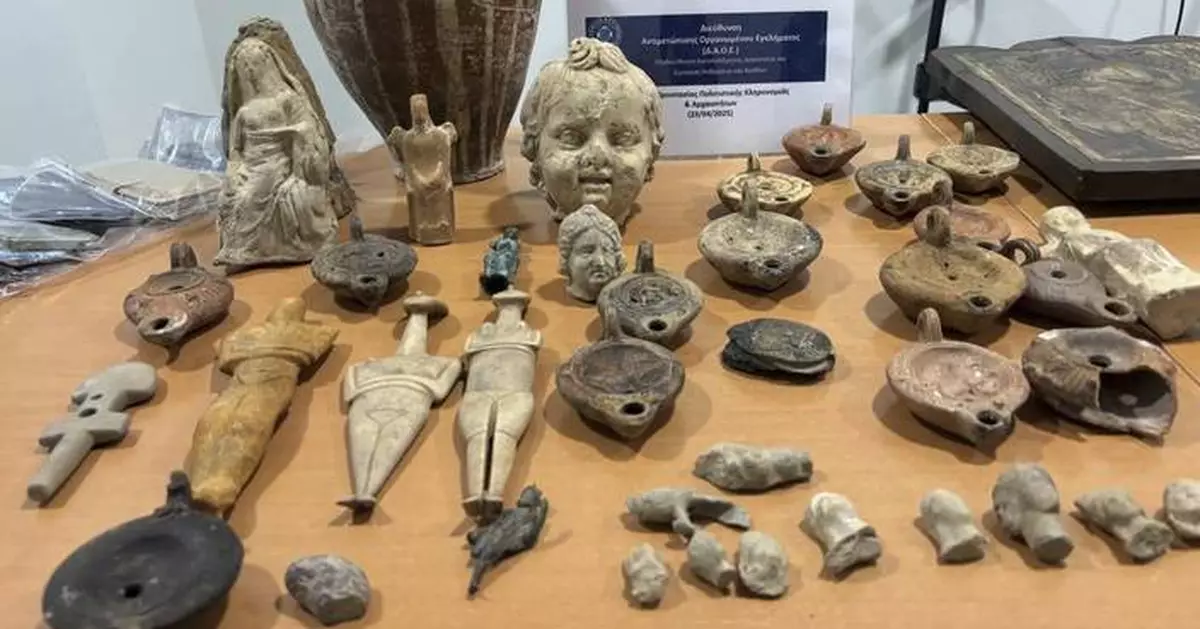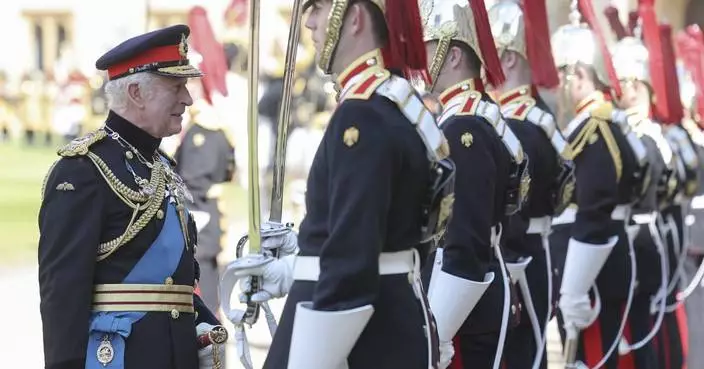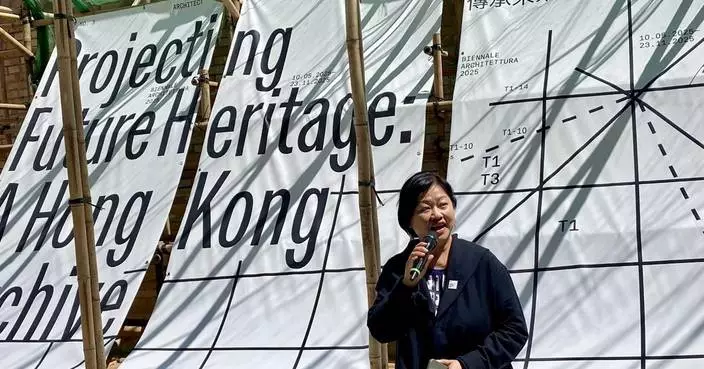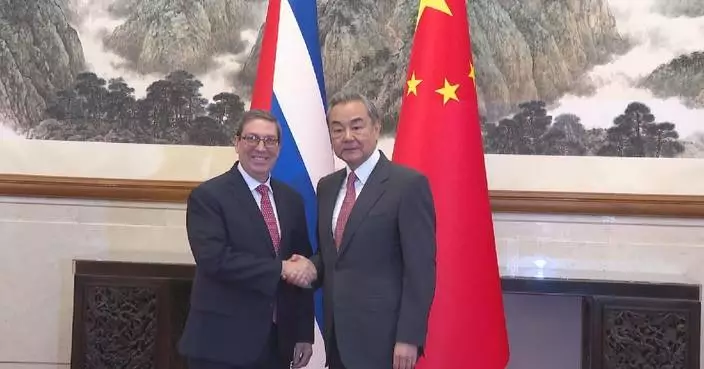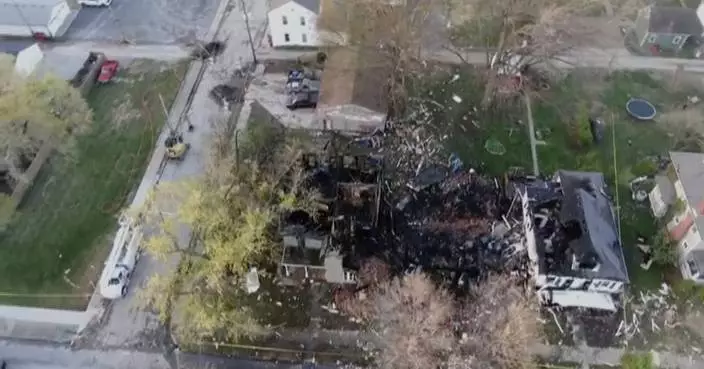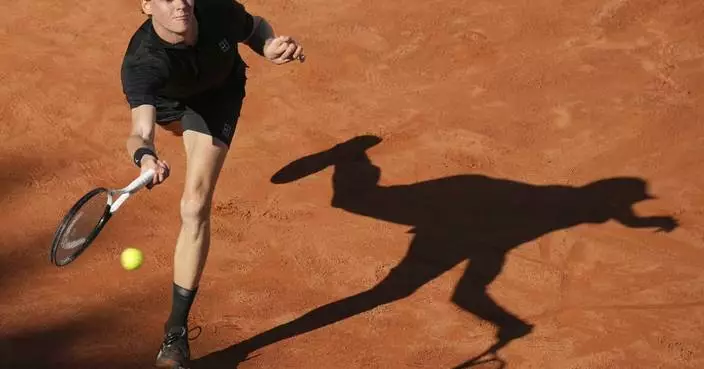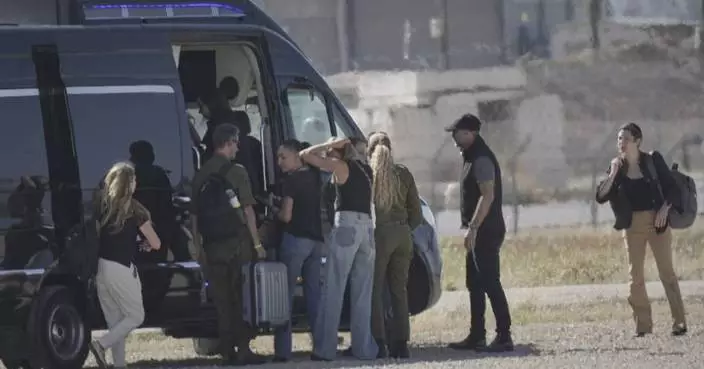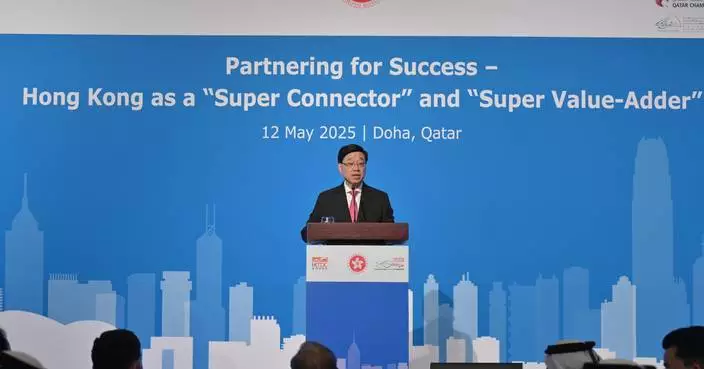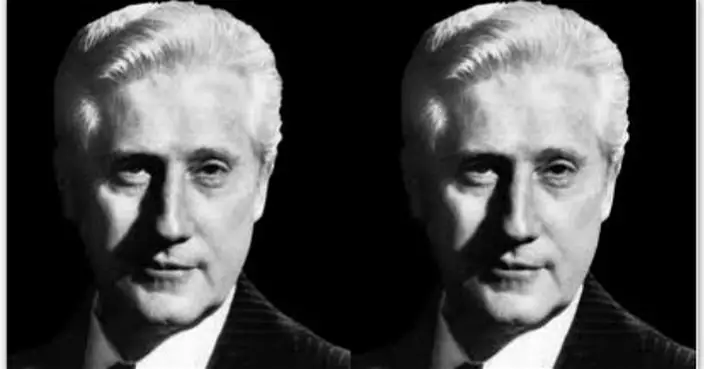ATHENS, Greece (AP) — Authorities in Greece have arrested six people on the island of Crete in connection with an alleged antiquities smuggling ring that was attempting to sell dozens of ancient artifacts, police said Thursday.
The arrests came after a sting operation on Wednesday, during which the suspects were reportedly trying to sell a collection of antiquities. Investigators say the group operated as a coordinated criminal network, with clearly defined roles, including a leader, go-betweens, and a designated transporter.
Among the recovered items were 15 ancient oil lamps, 17 figurines or fragments, several ceramic vessels, and a marble sculpture believed to depict a child’s head. All are thought to date from various periods of ancient Greek history and will be assessed by a state archaeological service.
Police also confiscated metal detectors and scanning equipment believed to have been used to locate buried relics, as well as firearms, ammunition, quantities of cannabis, and more than 3,000 euros ($3,200) in cash.
Greece, known for its rich archaeological heritage, has long battled the illicit trade in antiquities. Despite strict national laws, such artifacts remain highly sought-after on the international black market.
All six suspects are facing multiple charges, including membership in a criminal organization and breaches of cultural heritage protection legislation.
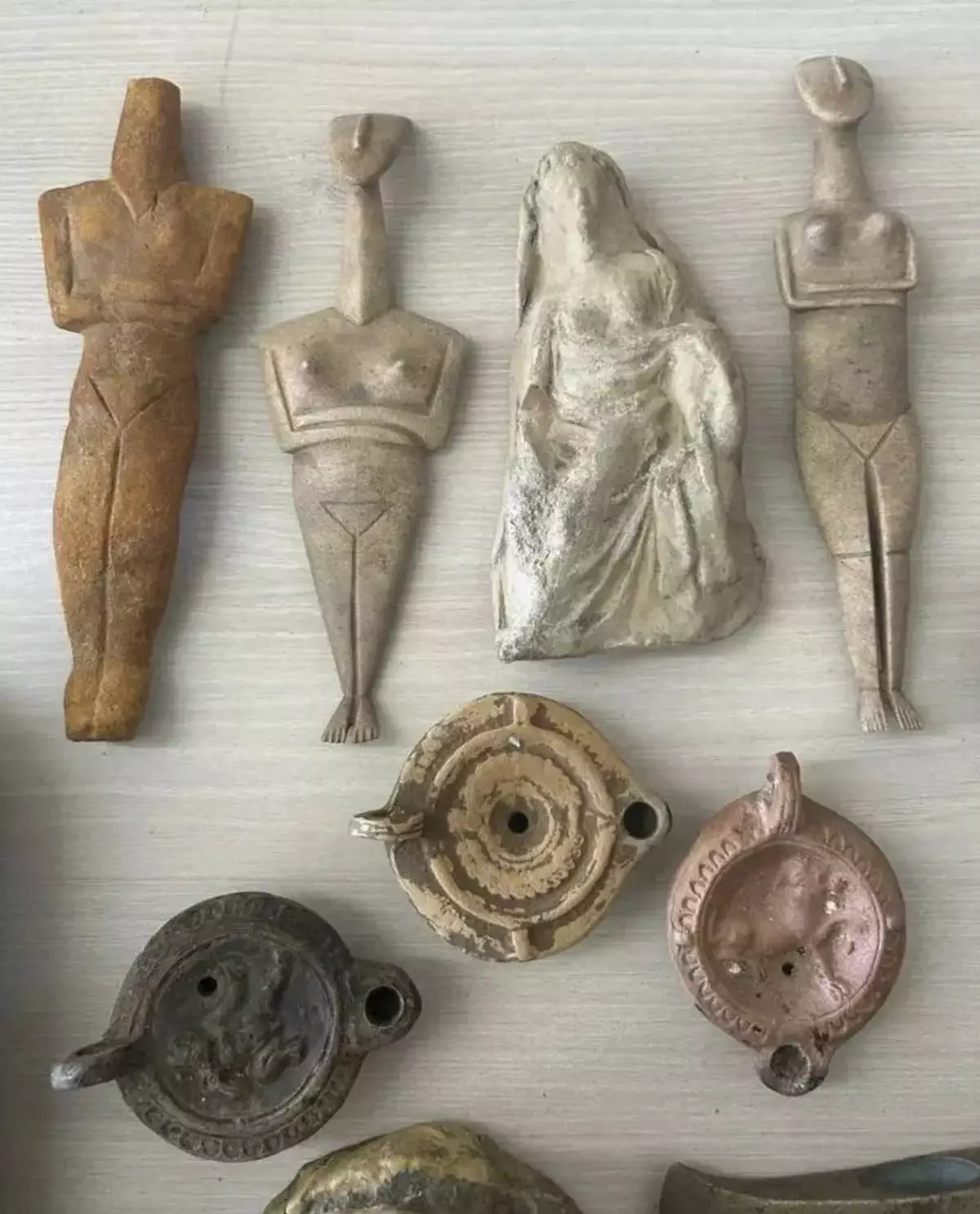
In this photo, distributed by the Greek Police on Thursday, April 24, 2025, seized ancient artifacts are placed on display in Police Headquarters in Athens following the arrest of six suspected antiquity smugglers on the island of Crete, Greece. (Greek Police via AP)
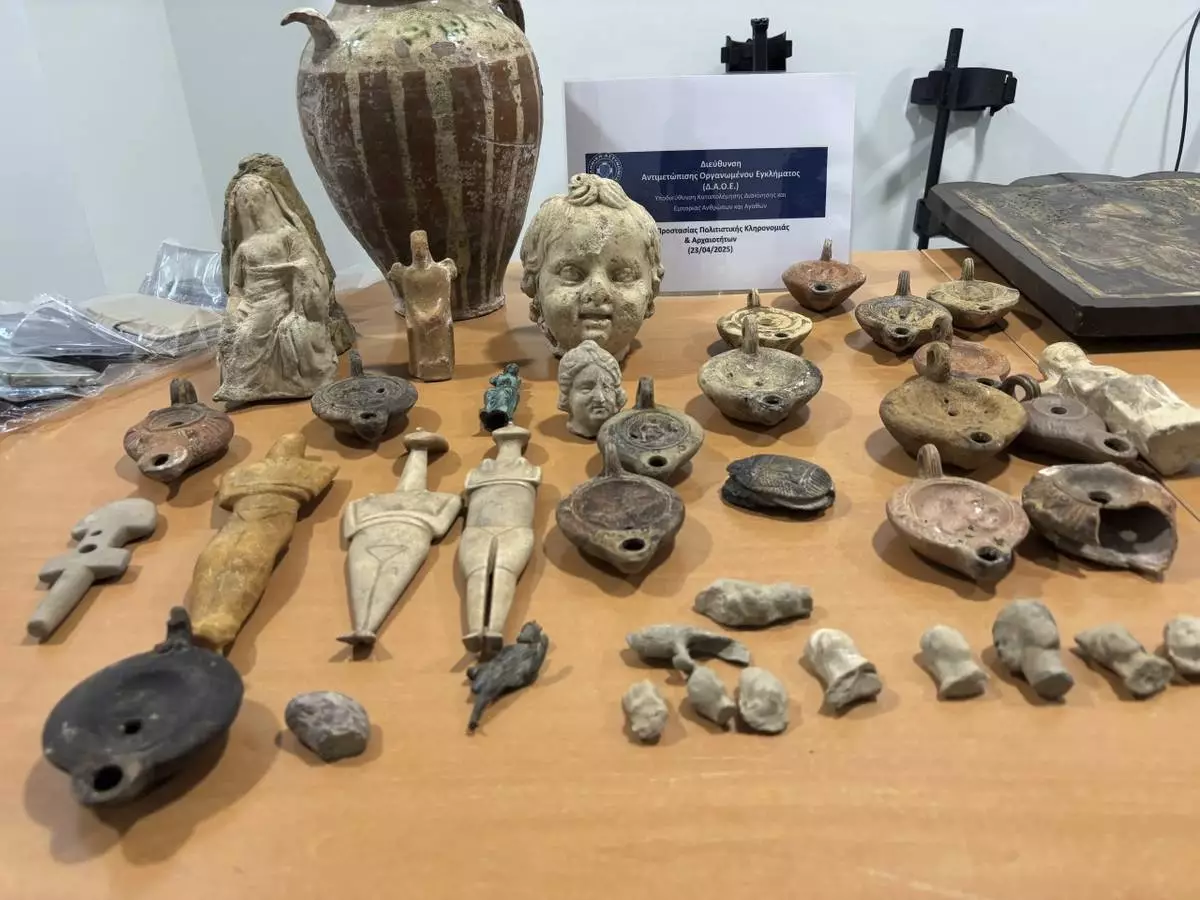
In this photo, distributed by the Greek Police on Thursday, April 24, 2025, seized ancient artifacts are placed on display in Police Headquarters in Athens following the arrest of six suspected antiquity smugglers on the island of Crete, Greece. (Greek Police via AP)
President Donald Trump was heading to Saudi Arabia on Tuesday, the first leg of his three-nation visit to the Middle East this week meant to tackle multiple crises and conflicts across the region.
His first stop is a visit to Saudi Arabia’s de facto ruler, Crown Prince Mohammed bin Salman. The two are to hold talks on U.S. efforts to dismantle Iran’s nuclear program, end the war in Gaza, hold down oil prices and more.
The crown prince is also expected to fete Trump with a formal dinner and a gathering of members of the Gulf Cooperation Council — made up of Bahrain, Kuwait, Oman, Qatar, Saudi Arabia and the United Arab Emirates — later on Tuesday.
Here's the Latest:
U.S. Treasury Secretary Scott Bessent said on Tuesday that America and China now have a “mechanism” to avoid tensions.
He spoke at an investment forum just before Trump was to land in Saudi Arabia.
“We had a plan, we had a process. What we did not have with the Chinese was a mechanism,” Bessent told the forum. “After this weekend, we have a mechanism to avoid escalation like we had before.”
Bessent said America could have a “big, beautiful rebalancing” with China as Beijing aims to have more of a consumption-based economy and Trump wants to see more precision manufacturing done in the U.S.
Previous trips by U.S. presidents to the kingdom have drawn comments about Saudi Arabia being “milked” by the Americans for oil and dollars for military sales.
But this time, Iranian newspapers and state television largely are not discussing Trump’s trip in detail.
The quiet may be due to the fact Riyadh and Tehran have been in a Chinese-mediated detente since 2023. Saudi Defense Minister Prince Khalid bin Salman, a brother to the Saudi crown prince, also traveled to Tehran in a high-level visit unthinkable in recent years of tensions between the two Mideast rivals.
Hussein Ibish, an analyst at the Washington-based Arab Gulf States Institute, said Saudi Arabia’s economic development projects at home means the kingdom wants peace across the region.
American and Saudi flags are lining the streets in Saudi Arabia’s capital ahead of Trump's arrival, along with a noticeable security presence in Riyadh of all American-made police cars.
At a “Media Oasis” set up for journalists, giant video screens showed off Saudi construction projects like its futuristic NEOM city and its hosting of the 2034 FIFA World Cup. A mobile McDonald’s sat in the parking lot, still shuttered.
Prince Turki al-Faisal, who led Saudi intelligence for more than two decades and served as ambassador to the U.S. and Britain, wrote in the English-language Arab News newspaper to Trump that “our doors and hearts are open to you.”
Saudi Arabia’s tightly controlled media offered positive comments regarding Trump’s visit. Columnists in the kingdom sought to describe the visit as part of a strategic reset in American-Saudi relations, which date back to when then-President Franklin Roosevelt met King Saud aboard the USS Quincy in 1945.
“Many countries around the world, including in Europe, are following Saudi Arabia’s lead in managing their affairs with Trump,” wrote Abdulrahman al-Rashed in Asharq Al-Awsat. “The era of relying solely on political and military alliances with Washington is over; the focus now is on forging shared interests.”
Faisal J. Abbas of the English-language Arab News wrote that “the significance of the visit cannot be overstated — nor could its timing be more crucia,” given Saudi Arabia’s mediation in the Russia-Ukraine war and the recent conflict between India and Pakistan.
He also acknowledged business deals would be part of the trip as well.
“Putting America first does not mean ignoring opportunities abroad; it means seizing them,” Abbas added.
Trump’s trip to Saudi Arabia comes as the president can already point to one thing for American voters — oil prices are down.
It’s not Trump’s doing, though he’s repeatedly criticized Saudi Arabia and the OPEC+ oil cartel over higher oil prices in the past. Those prices translate directly back into gasoline prices in the United States, which can become a major pain point for the U.S. public. The average price for a gallon of gasoline in the U.S. is $3.13, according to AAA, down from $3.61 a year ago.
Right now, benchmark Brent crude trades around $64 a barrel. That’s higher than when the around $50 a barrel it traded on his first trip to the kingdom as president in 2017. However, it’s nowhere near the spikes seen after Russia’s full-scale invasion of Ukraine in 2022. Then, the average gallon of gas in the U.S. was $5.01 at its height.
Economic uncertainty over Trump’s tariff policy has depressed global energy prices — as has OPEC more rapidly opening up production than initially thought. Saudi Arabia in particular needs that extra revenue as the crow prince's expansive development plans and the kingdom hosting the upcoming 2034 FIFA World Cup will need hundreds of billions of dollars of investments.
The Syrian Foreign Ministry says the sanctions on the country were imposed under the government of ousted Syrian President Bashar Assad and helped in removing him from power.
But they are now harming the Syrian people, the ministry says, describing Trump’s comments about removing them as “an encouraging step” to end the suffering of Syrians.
The ministry said in a statement late Monday that the sanctions are hindering reconstruction in the war torn country.
The Syrian people are looking for the “full lifting of the sanctions” as a step that boosts peace and prosperity both in Syria and the region, and open the way for international cooperation, it said.
Trump had intended to focus on pressing wealthy Gulf Arab nations during the Mideast trip to pour billions in new investment into the United States.
But Trump finds himself navigating a series of geopolitical crises — and searching for glimmers of hope in the deep well of global turmoil.
Those challenges are casting greater import on his first extended overseas trip of his second term, but the president is brimming with an overabundance of confidence about some of the world’s most intractable problems.
▶ Read more about Trump’s three-nation visit
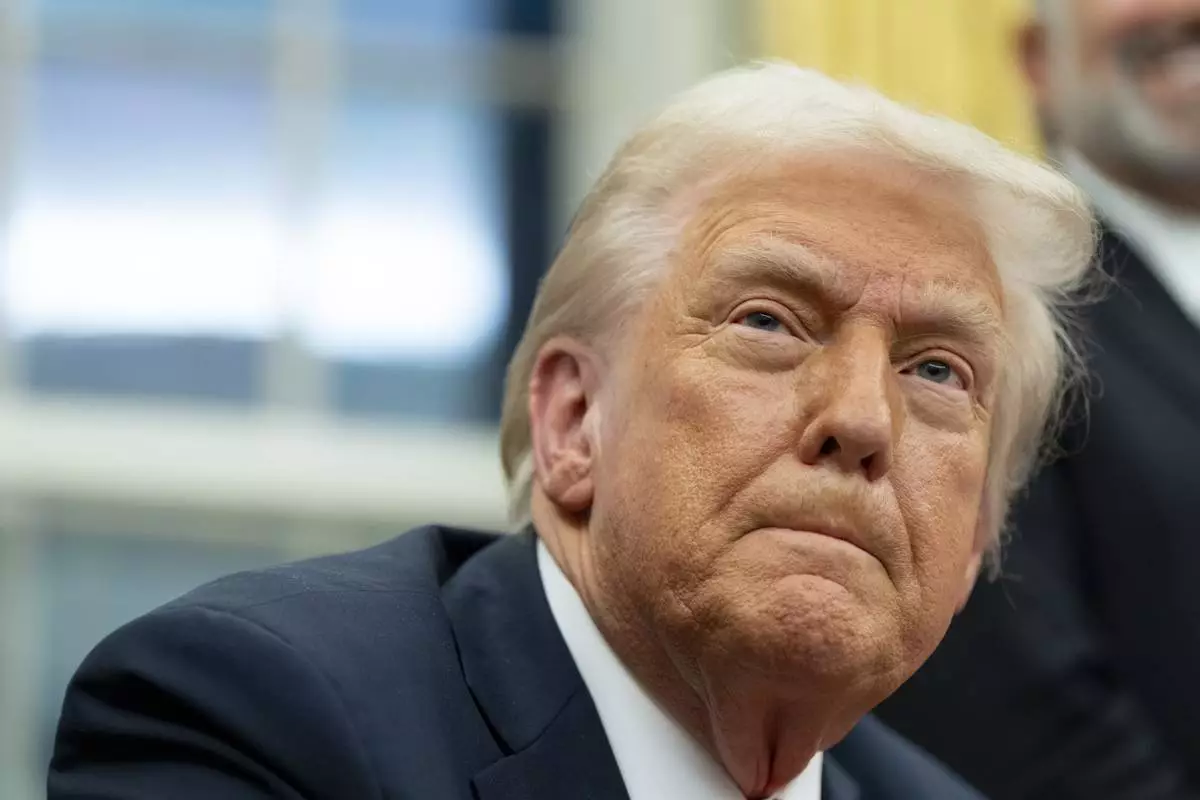
FILE - President Donald Trump speaks with reporters as he signs executive orders in the Oval Office at the White House, Feb. 10, 2025, in Washington. (AP Photo/Alex Brandon, file)




